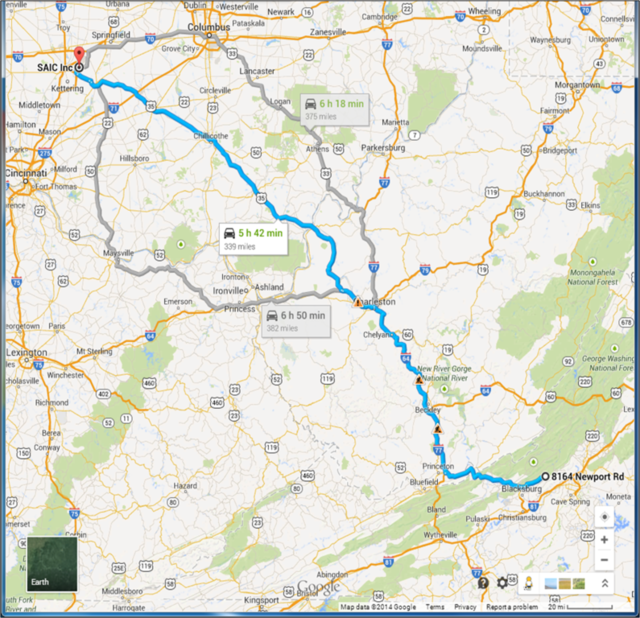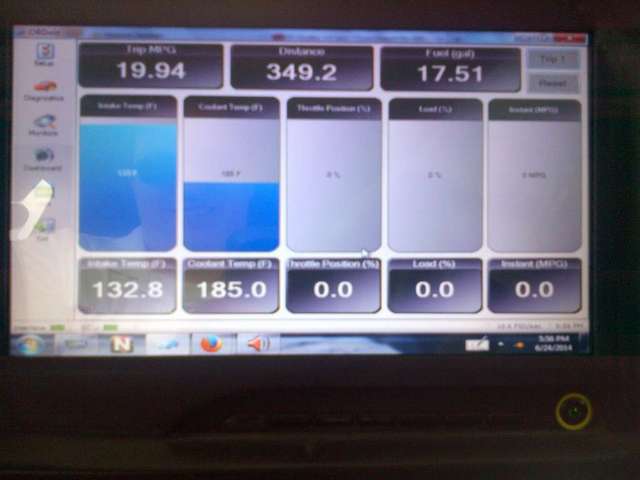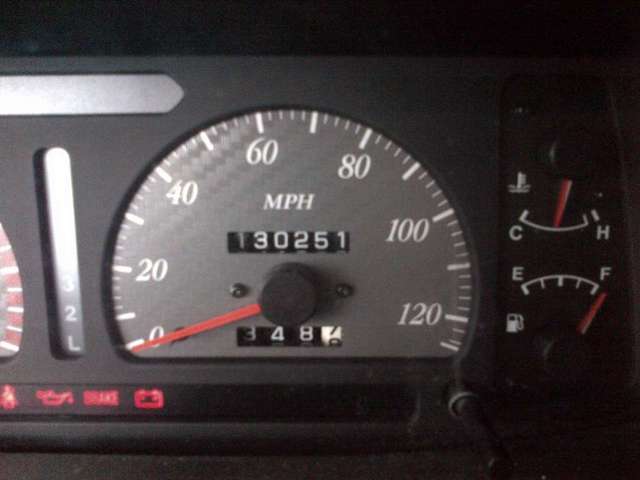Much is made about the awesomeness of driving a 5-speed VX, but one thing we haven't seen a lot of is MPG gain analysis. After driving to WI and back in the wife's new fuel-efficient turbo Forester I decided to do a test run of my own with the VX, but this time using premium fuel (93 octane) and some MPG saving tricks I've learned through the assistance of my car PC, most notably coasting down long hills with the clutch in rather than with the transmission in gear. Below are my findings:
Here's a map of my route through the mountains in VA, WV, and OH then across a mostly flat area to Dayton. (Btw it includes 3 toll booth stops where you have to restart your uphill climb from zero.)
Here's the data from my car PC real-time dashboard:
And here's the analog data.(Isn't it weird that the trip distance is slightly off? Yes I made absolutely sure to reset them at the exact same time.)
Price and quantity at the pump:
Obviously there's a big delta between the fuel consumed value on the PC and what I saw at the pump, but it's pretty typical in my experience (OBDII tool uses MAF readings to generate a best guess which coincidentally always seems to be optimistic). But if you take the more realistic/pessimistic fuel consumption value from the pump and take into account that I'm running 3% taller tires, I calculate 19.71 MPG for the trip. Keep in mind that's with the AC running the whole time, plus my VX has larger tires, heavier rims, a full-size spare on board, and 150 lbs. of Kilby skid plate underneath. I'll track my fuel economy on the way back (which involves a greater net elevation change but still lots of uphill and downhill grades) and let you guys know how it goes.
So how does that compare to a VX with the auto trans? I had all these same mods on my last VX and I think 15-16 MPG would be pretty realistic for the same trip (although honestly I've never ran 93 before). If so that's an increase of anywhere from 23% to 31% better than the auto.









 Reply With Quote
Reply With Quote